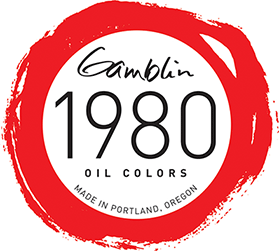https://gamblincolors.com/oil-painting/color/1980-oil-colors/

Gamblin 1980 Oil Colors are made with the same dedication and pure pigments that go into our Artist’s Oils. In addition, we use the same process of mixing, milling, filling, and hand labeling.
In order to reduce the cost of oil colors, some manufacturers use gels and waxes to stiffen colors and replace traditional pigments with less expensive ones.
Our approach is different. 1980 colors are formulated with pure pigments, the finest refined linseed oil and marble dust (calcium carbonate). More affordable colors have been made with these three ingredients since oil painting began.
With 1980 colors, artists experience colors that are true, without homogenized texture or muddy color mixtures. Our approach of using both traditional raw materials and processes ensures that artists experience the luscious working properties that they expect from their oil colors.











